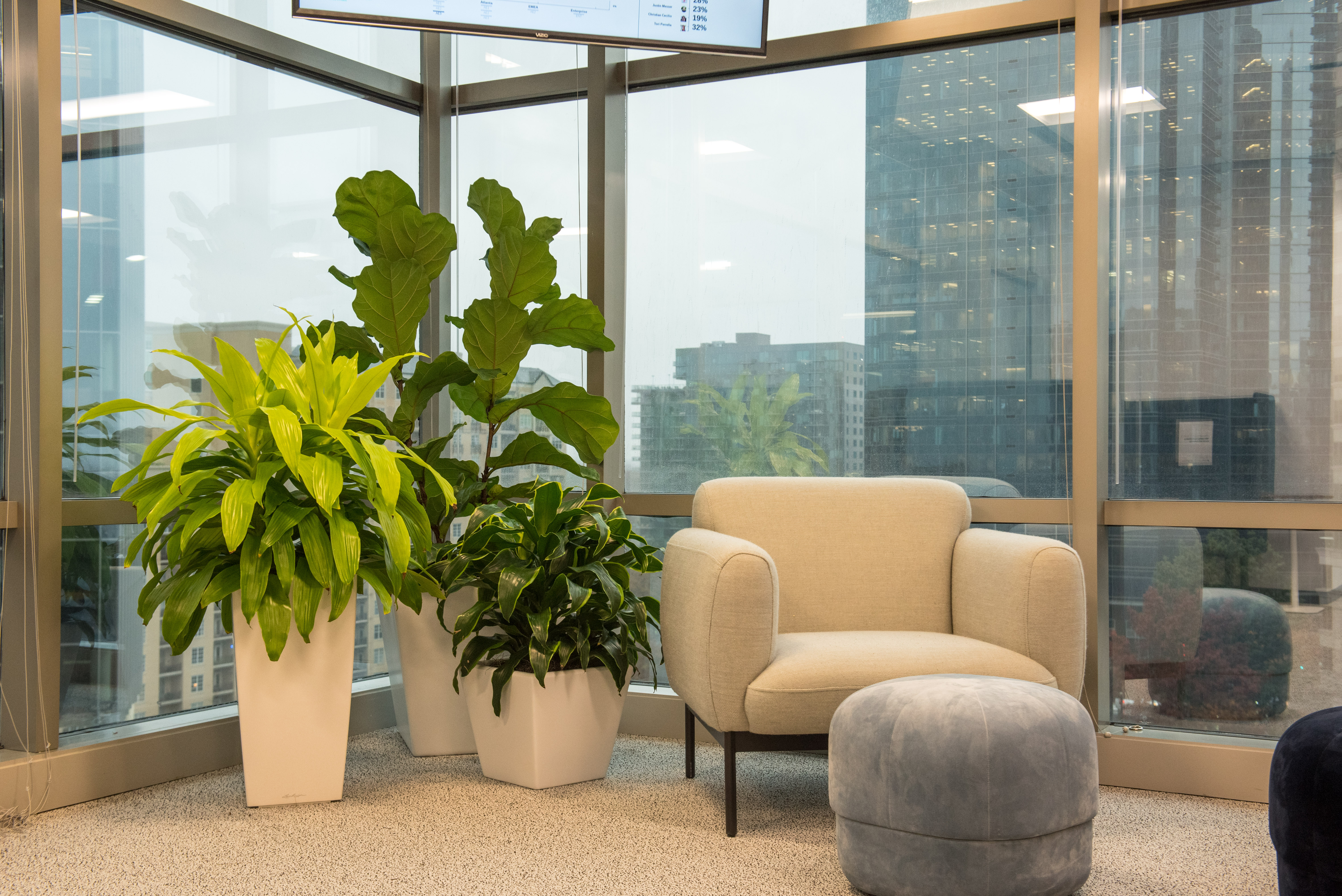The COVID-19 pandemic reshaped the way we work. Remote work became the norm, and many employees grew accustomed to the comfort and flexibility of their home offices. As offices reopened, companies realized that they needed to reimagine their workspaces to entice employees back to the office. Many companies are focusing on making the office more residential and collaboration-based by completely remodeling and getting rid of the traditional cubicle-filled space. The answer, it turns out, was actually to bring a touch of nature indoors and create that homelike feeling.
The Best Plants to Redesign Your Space:
- Fiddle leaf fig - The fiddle leaf fig, with its large, lush leaves and striking appearance, serves as an excellent addition to collaborative office spaces due to its ability to create a visually appealing and inviting atmosphere, promoting creativity and engagement among employees. Its air-purifying qualities also contribute to a healthier and more productive work environment, ensuring that everyone can breathe easier while they collaborate.
- Birds of Paradise - Birds of paradise are an excellent choice for collaborative office spaces due to their tropical elegance that inspires creativity among employees. Its large, broad leaves help improve air quality by purifying and humidifying the surrounding environment, promoting a healthier and more comfortable workspace conducive to teamwork and innovation.
- The Snake Plant - The snake plant is an ideal addition to collaborative office spaces due to its remarkable air-purifying abilities, which help maintain a clean and healthy atmosphere for employees. Additionally, its low-maintenance nature makes it a perfect choice for busy offices, allowing everyone to enjoy the benefits of a green workspace without the hassle of constant care.
The greening of office spaces is not merely an aesthetic trend but a strategic move to create inviting community hubs where employees feel motivated and inspired. By integrating plants into the workplace, companies are not only contributing to the physical well-being of their employees but also nurturing a culture of collaboration, creativity, and well-being.
As organizations continue to adapt to the changing dynamics of work, one thing is clear: the power of plants in the workplace is here to stay, fostering a healthier, more engaging, and appealing work environment for all.

